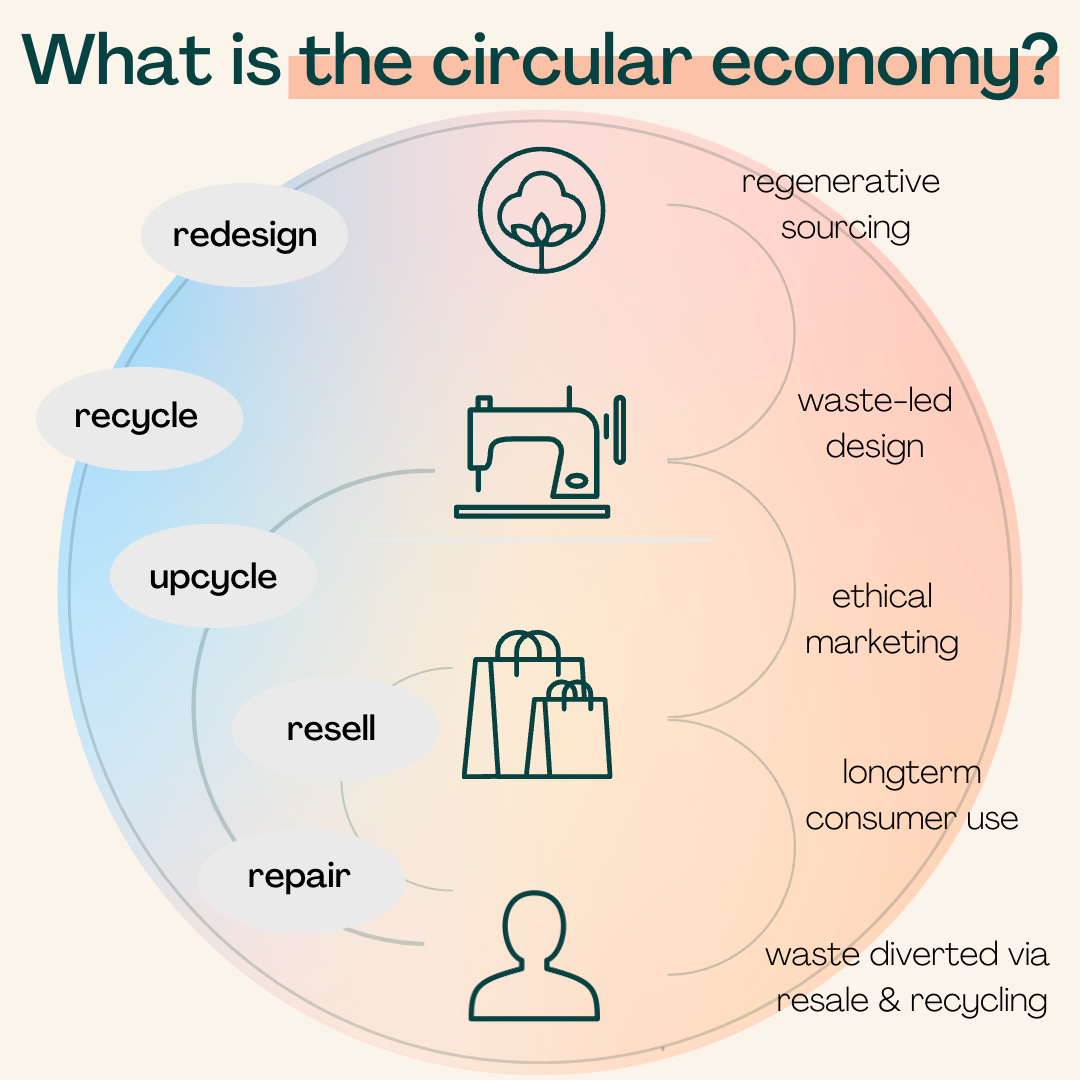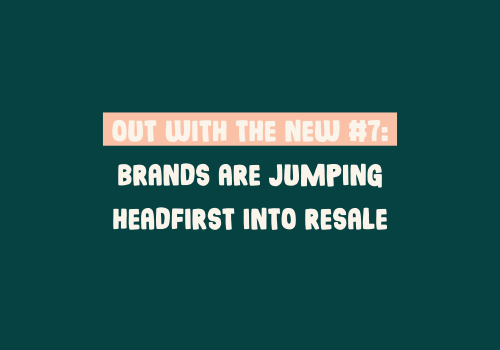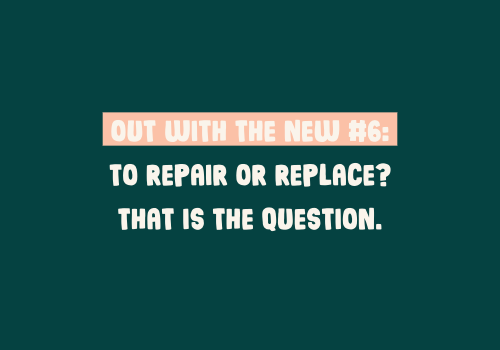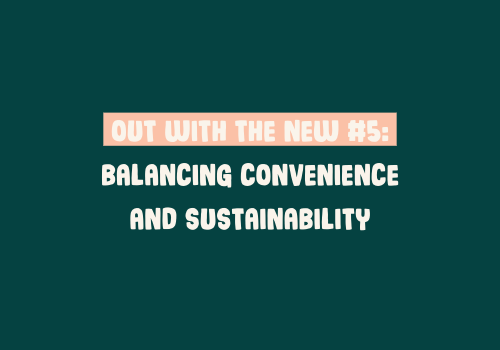#8: What even is the circular economy?
This week we're going to do something a little different and give you a sneak peak into our NEW BLOG SERIES which is officially launching on our BRAND NEW WEBSITE next week! It's a bit longer than our typical newsletter, but I promise it's worth the read :)
If you’ve been hanging out with us for a bit, you’ve likely heard us mention the circular economy. But what does “circularity” actually mean?! It’s one of those sustainability buzzwords, but it holds the key to a better future in fashion.

Circular Fashion Defined
Traditional fashion models follow a linear progression, also known as “take-make-dispose.” We extract our planetary resources to make them into products that are used briefly then discarded as waste. The process repeats for the next round of production, using up new (limited) resources and creating more waste along the way. The linear model is most concerned with churning out a bunch of new clothes, without considering the environmental impact of its extractive practices or where all that clothing goes when shoppers are done with it.
A circular model of fashion production seeks to keep items in use for as long as possible and design waste out of the system. Rather than viewing waste as a necessary byproduct and inevitable outcome like the linear model, circular fashion aims to rethink waste, use it as an input, and develop a closed-loop system. Circular fashion reduces the amount of virgin (raw material) inputs, designs clothing with its end-of-life in mind, and diverts textile waste from landfills.
Designing with the End in Mind
To truly accomplish a circular economy, circularity must be the goal from the start. This means it’s a design choice just as much as it’s about intentional disposal. Fashion brands must design with the end-of-life of the product in mind, also known as waste-led design. This involves choosing renewable or recycled inputs, designing for durability, and constructing garments in ways that they can be disassembled to be remade or recycled. Rather than making clothes without considering the future consequences, circularity leverages a long-term approach that examines how every step of a garment’s lifecycle can maintain value and utility.
The 7 R Framework
Another way of looking at circularity is to refer to the 7Rs:
- Rethink: Consider every step of the production and consumption process and re-imagine them to eliminate waste and optimize resource usage.
- Reduce: Cut back on the need for new production and new inputs by minimizing excess and wastage in the production process.
- Reuse: Take care and rewear pieces as long as possible. Rehome products where they can get more use.
- Repair: Rather than disposing of damaged pieces, repair them in order to reuse or resell.
- Refurbish: Modify or upcycle products to make them usable or desirable again.
- Recycle: Break down items to be used as inputs to be made into something new.
- Recover: In our current systems, not everything can be 100% circular, so recovering is about salvaging what you can from what can’t undergo any of the other Rs. This may look like a waste-to-energy process or downcycling.

All of these concepts are a part of building a circular economy. These necessary actions are interdependent and lean on each other to create a holistically circular model. Therefore, we need a variety of circular business models. While fashion businesses need to be considering each of these actions and every step of their product’s lifecycle, some circular business models will specialize on one element such as regenerative farming or textile recycling. Or, our personal favorite model: resale!
Fashion Resale & Circularity
The existing fashion industry is far from circular. Most clothing end-of-life systems are underdeveloped and flawed. Clothes are made to be disposable, with poor construction, synthetic materials, and trend-led marketing that leads to high turnover. Textile-to-textile recycling barely exists, especially not at scale, and most clothes end up in landfill no matter where they started in the waste stream. Many clothing “recycling” programs are actually a downcycling process where clothes get turned into rags or insulation. When clothes are made with synthetic fibers and blends, they become extremely hard to truly recycle and will take centuries to decompose due to their plastic-based inputs.
Because of all these shortcomings, business models like resale, upcycling, and repair are really important because they offer circularity despite the lack of circular infrastructure and tech available now. Secondhand fashion allows for clothes that otherwise would have been landfilled to re-enter the clothing market and stay in use for longer! The beauty of resale is that there are far fewer barriers than other circular models that make it easier to take advantage of, for both businesses and consumers. Rather than advances in technology and specific material inputs that recycling and waste-led design requires, resale is able to make use of what already exists, as it is. So much clothing of value is needlessly disposed of, but secondhand business models can capture that value and redistribute it.
And at Beni, we are making it even easier to get amazing secondhand clothes into your hands. While we definitely have a long way to go until fashion becomes circular, resale is an incredible way we can all participate in circularity now!
____
Join the Beni Community
Welcome to our 'Out with the New' Newsletter! Join us every week as we demystify the world of resale. We'll share the latest Beni news, insider tips for shopping secondhand, and guide you through the trends shaping the future of fashion.
- Subscribe to 'Out with the New'
- Follow @join_beni on Instagram, TikTok, and LinkedIn
- Share with your friends & colleagues
- Install the Beni browser extension
- Give us Feedback if there is something you'd like to see!



